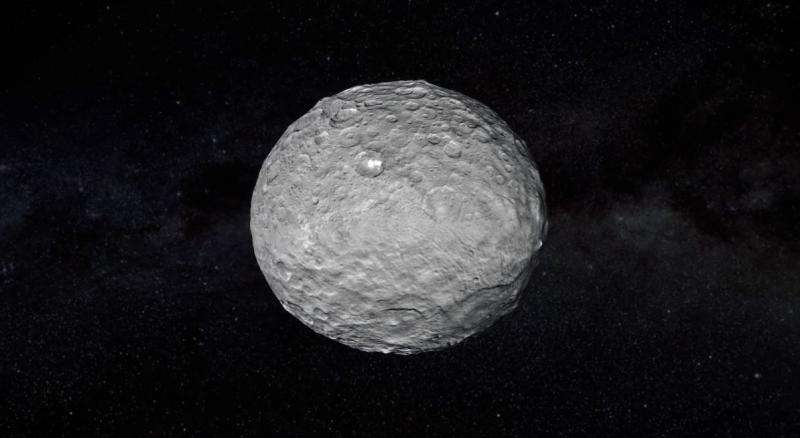According to a new study, ice-spewing volcanoes on the dwarf planet Ceres generate enough ice to fill a cinema. These calculations and conclusions were derived in a new study conducted at the University of Arizona.
The study published in Nature Astronomy was led by UA planetary scientist Michael Sori, who has been studying the dwarf planet’s 4.5-billion-year life. The study marks the first time the rate of cryovolcanic activity has been determined based on observations. The calculations also shed light on why the dwarf planet Ceres doesn’t have any mountains.
NASA’s Dawn spacecraft discovered Ceres in 2015. The volcano Ahuna Mons rises in solitude on the planet’s surface. The volcano is still young in terms of geology, even though scientists believe it is no more than 200 million years old. That said, even though it’s inactive at the moment, it was in the past.
In a paper published last year, scientists theorized that there could be older volcanoes on the dwarf planet, but that the natural process known as viscous relaxation made the other volcanoes disappear.
“Rocks don’t do that under normal temperatures and timescales, but ice does,” Sori said in a statement.
Since Ceres is made of rock and ice, Sori and his team suggested that various rock and ice formations from it are flowing or tectonically moving under their own weight, which is how glaciers move on Earth. The compositions and temperatures of those formations impact how fast they relax and blend into the landscape. If there is more ice in the formation of the dwarf planet, the flow is faster. If temperature is lower, the flow is slower.
Ceres is never warmer than about 30 degrees Fahrenheit, although the temperature across its surface often varies.
“Ceres’ poles are cold enough that if you start with a mountain of ice, it doesn’t relax,” Sori said. “But the equator is warm enough that a mountain of ice might relax over geological timescales.”
After analyzing computer simulations, the team found that their theory about ice-spewing volcanoes is viable. The model cryovolcanoes at the poles of the dwarf planet were frozen in pace, while at the its other latitude, model volcanoes began growing, although they became shorter, wider and more rounded as time passed.
Scientists wanted to prove their simulations showing ice-spewing volcanoes on the dwarf planet Ceres were realistic, so they made topographic observations from the Dawn spacecraft, which has been orbiting Ceres since 2015. The team wanted to find land that was compatible with the one of their computer models.
“The really exciting part that made us think this might be real is that we found only one mountain at the pole,” Sori said.
Even though the polar mountain is old and damaged from impacts, it has the same shape as Ahuna Mons. Interestingly, it’s five times wider than its height, with an aspect ratio of 0.2.
“We found that one volcano forms every 50 million years,” Sori said.












